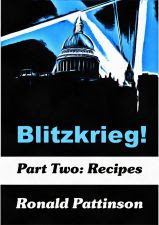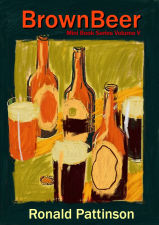A classic post today. Basically just a series of tables. You know how I love me a good table or two
"Kilning.
The finishing temperature (in the malt) for the three types of malt employed in lager brewing vary as under:—
| Pale |
140° to 178° F. |
| Medium |
196° to 207° F. |
| Dark |
201° to 212° F. |
Particulars of treatment on the kilns:—
| For pale and
medium malts |
12 hours on upper (drying) floor. |
|
12 hours on lower (curing) floors. |
Loaded 6 A.M. and 6 P.M. . . . 24 hours in all.
| Pale. |
Medium. |
| Turnings. |
Hour. |
Temperature in air, º
F. |
Turnings. |
Hour. |
Temperature in air, º
F. |
| 1 |
8 |
100 |
1 |
7 |
113 |
| 2 |
9 |
106 |
2 |
8 |
118 |
| 3 |
10 |
113 |
3 |
9 |
125 |
| 4 |
11 |
122 |
4 |
10 |
128 |
| 5 |
12 |
131 |
5 |
11 |
131 |
| 6 |
1 |
136 |
6 |
12 |
145 |
| 7 |
2 |
145 |
7 |
1 |
156 |
| 8 |
3 |
156 } |
8 |
2 |
167 |
| 9 |
4 |
156 }* |
9 |
3 |
180 } |
| 10 |
5 |
150 } |
10 |
4 |
180 } ** |
|
|
|
11 |
5 |
180 } |
* In malt, from 3 to 5.30, 167° F. ** In malt, from 3 to 5.30, 203° F.
Note.— Mechanical turners are almost universally employed on both floors.
Dark Malt.
24 hours on upper (drying) floor.
24 hours on lower (curing) floor.
The analyses of the various malts yield the following results:—
| Time. |
Temperature in air (curing). ºF. |
| Loaded at 7 a.m.— |
|
| to 10 a.m. |
113 |
| 11 A.M. to 2 P.M. |
122 |
| 3 P.M. to 8 P.M. |
133 |
| 9 p.m. to midnight |
145 |
| at 1 a.m |
154 |
| 2 A.M |
167 |
| 3 A.M |
180 |
| from 3 A.M. to 6 A.M. |
212 in malt. (Thausing). |
Windisch, on the other hand, gives the following average composition of these three classes:—
| Highest kiln heat
in malt. |
Pale, 166-178° F. (56-65° R.) |
Medium, 189-212° F. (70-80° R.) |
Dark, 223-246° F. (85-95° R.) |
| Colour of the corn |
Pale |
Pale |
Yellowish. |
| Colour of the flour |
White |
Yellowish |
Yellow. |
| Taste and smell |
Mildly aromatic |
Aromatic |
Strongly aromatic. |
| Moisture |
5.5 p.c. |
4 p.c. |
3 p.c. |
| Extract of the malt |
73 p.c. |
73 p.c. |
73 p.c. |
| Extract of the dry substance |
77 p.c. |
76 p.c. |
75 p.c. |
| Maltose in extract |
74-76 p.c. |
70-74 p.c. |
66—68 p.c. |
| Apparent attenuation, Frohborg yeast |
73-75 p.c. |
70-72 p.c. |
65-67 p.c. |
| Apparent attenuation, Saaz yeast |
64 p.c. |
61 p.c. |
56 p.c. |
| Acidity (as lactic acid) |
0.6 p.c. |
0.8 p.c. |
1.0 p.c. |
| Saccharification period |
10-15 mins. |
20 mins. |
30 mins. |
| Colour of an 8 per cent, wort |
Pale yellow |
Full yellow |
Gold yellow to brownish. |
| Expressed in N/100 iodine solution |
1-1.5 cc. |
3-4 c.c. |
6-8 c.c. |
Journal of the Institute of Brewing, vol. XVII, 1920, page 492.
By pale, medium and dark, I assume that they mean pils, pale Munich and dark Munich. Obviously, these aren;t the only three malts used in Lager brewing. They're the three base malt. Roasted malt was also used in very dark beers.











































































3 comments:
In the Windisch table, I believe that's meant to say "Saaz yeast", not "Sum yeast".
Andreas,
well spotter. Now fixed.
Two floor kilns I see. I wonder what the air moisture content was? When making munich malts nowadays moist air is recirculated to some extent to increase Maillard reactions and the colour and flavour they bring.
Post a Comment